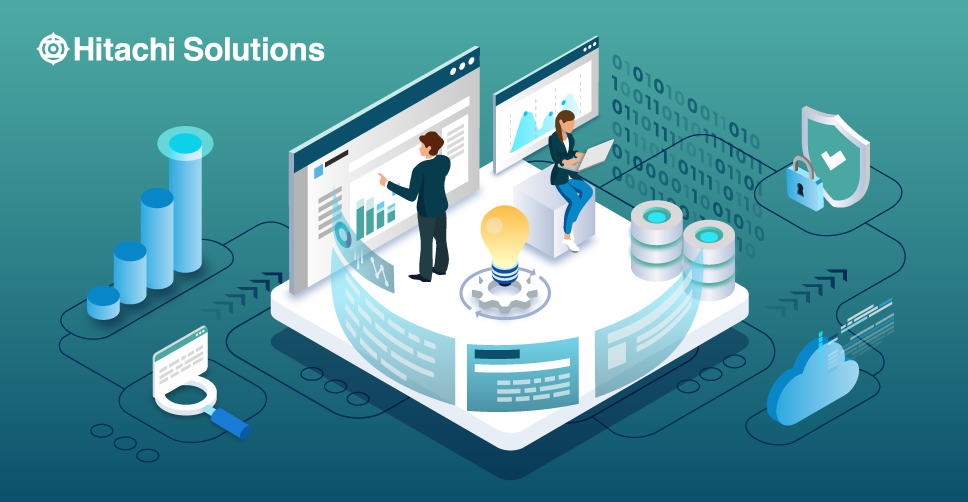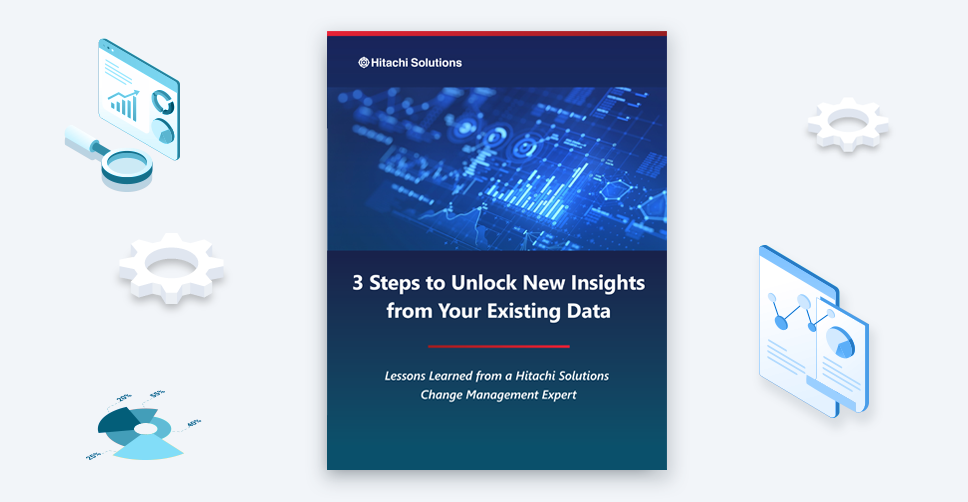

Hitachi Solutions Empower Data Platform Trial Offer
Empower Data Platform harnesses the power of AI and machine learning to accelerate, automate, and simplify creating data ingestion.
Download the OfferThis is the third article of a series looking at modern data platforms and emerging data architectures. Today, we look at how to approach data platform modernization in a focused, flexible way in any type of environment — on-premises, IaaS, hybrid, or SaaS.
Data is at the center of every application, process, and business decision. But the challenge lies in managing all that information — everything from storage and access to security and compliance. A modern data management platform solves this problem by using all the data an organization owns to accelerate informed and more accurate decision-making. It’s also the foundation for advanced analytics such as AI and machine learning.
To be useful, these data assets need to be connected and managed cohesively. And to do that, you need the capabilities of a modern data platform.
Modern data platforms are made up of tools that connect databases, analytics, and governance that, on their own, meet specific business needs. Together, though, they can evolve core applications to take advantage of advanced analytics and intelligence. This not only means understanding what happened in the past or what is happening at this moment, but also predicting what will happen in the future — like forecasting equipment failure, anticipating customer needs, or foreseeing catastrophic events. You can do this with AI, but to take full advantage of AI, you need a modern data estate.

Start small, be agile
Teams will be most successful when they are focused on a prioritized set of outcomes. However, they often fail because they are trying to address too many demands at once, ultimately being stretched too thin and not making a meaningful impact to maintain interest or funding.
To help ensure success, prioritize your efforts to get some quick wins to prove the return on an investment in your data. Create a phased plan that can deliver continuous value to the business rather than some large project that will take months before the first signs of payoff. For example, leaders can start with smaller budgets and create minimum viable products, releasing them into production to demonstrate their value before expanding and evolving further.
“Businesses want to know how they are going to make money or save money based on a data investment,” said Don Scott, Hitachi Solutions vice president of new product development. “We can identify the most efficient pathway to doing so.”

Featured Resource
Check out our eBook: 3 Steps to Unlock New Insights from Your Existing Data. It’s a great primer from Hitachi Solutions’ advisory services expert Dave Horstein on how to approach data analytics and modernization programs from an organizational level.
Drive modernization in any environment
There are many architectural approaches to building or modernizing a data platform. Our goal at Hitachi Solutions is — and always will be — to meet our customers where they are. In this instance, that means starting with your existing data infrastructure and helping you evaluate the best near-term approaches to moving forward and realizing ROI.
Let’s look at how you can drive modernization, regardless of the environment.
On-premises private cloud
A fully-managed in-house data platform refers to a data management solution that is built, maintained, and operated within an organization’s own infrastructure or data centers (as opposed to using a cloud-based solution). It is accessible only to the organization’s authorized personnel. On-premises solutions collect, process, store, analyze, and visualize large volumes of data in a very centralized manner. This provides the organization with complete control over the platform, the data stored on it, and how it is accessed and used.
In-house data platform solutions are used for many reasons, most obviously, data security and compliance. Some organizations deal with sensitive data that requires strict security measures and compliance with regulations such as GDPR or HIPAA. With an in-house data platform, the organization can maintain complete control over its data and ensure it is always secure and compliant.
Even though an in-house data platform is built within an organization’s own infrastructure, it can take advantage of modernization efforts to improve its capabilities, efficiency, and scalability.
For example, by implementing Microsoft Azure Stack on-premises, you can create a private cloud environment that provides the same Azure services and management tools as the public cloud but lets you run applications and workloads locally. Azure Stack supports a wide range of data services to store, process, and analyze data on-premises, and when you are ready you can easily connect to Azure cloud services to extend your data platform to the cloud.
Another tool is Microsoft Azure Data Factory. This cloud-based data integration service orchestrates and automates the transformation of on-premises data to a format that can be used for analysis. Let’s say you have an on-premises database that stores customer information for your organization, and you want to extract that data, transform it, and load it into a cloud-based data warehouse for analysis.
Using Azure Data Factory, you could create a pipeline that connects to your on-premises database using a self-hosted integration runtime and then extracts, transforms, and stores the data in a cloud-based warehouse. The pipeline can be triggered on schedule or in response to an event, such as the availability of new data in the on-premises database.
Overall, the decision to build and maintain an in-house data platform depends on specific needs, data volumes, processing requirements, and long-term goals. While building and maintaining an in-house data platform can be more expensive upfront, it does provide greater control.
It’s also important to remember that if you’re fully managing your own data estate, you’re responsible for all the technical aspects, including installation, configuration, maintenance, and upgrades.
Platform as a Service (Paas)
A PaaS data platform, built on Microsoft Azure and Azure Synapse, is a cloud-based computing model that allows companies to access and use computing resources over the Internet. The cloud provider provides the virtualized infrastructure, including computing resources like servers, storage, and networking components, as well as the platform for developing, deploying, and managing applications— the operating system, middleware, database, and development tools. PaaS allows developers to focus on building and deploying applications without worrying about the underlying infrastructure. PaaS providers manage the infrastructure and ensure that it is secure, scalable, and available.
PaaS platforms are true modernized data platforms because they allow companies to manage large amounts of data that require significant computing resources. Azure Synapse serves as the computing platform power needed to process the data. Computing resources can be scaled up or down depending on need.
Many organizations choose PaaS platforms when they have the internal IT resources to manage their data estate, along with an in-house data and analytics team that can create new data modeling and reports on its own.
PaaS solutions come with pre-configured components. At Hitachi Solutions, our Azure-based PaaS solution includes a host of accelerators and pre-built tools that are designed to accelerate deployment and decrease the time to realize business value. Our solutions are built using state-of-the-art lakehouse architecture, so organizations can take advantage of all types of data, both structured and unstructured.
A Hybrid Solution
The fact is many customers fall into the hybrid space, with both on-premises and cloud data. And one thing we consistently hear from customers is that any digital transformation needs to leverage their existing investments, according to Cary Holley, Hitachi Solutions’ vice president of data and analytics. With that said, a hybrid solution is the answer for many customers in the foreseeable future.
A hybrid approach means doing more with the applications you have already invested in, modernizing them and potentially transitioning them to the cloud over time.
In a hybrid scenario, for example, your on-premises data platform could be used to store and process sensitive data that must comply with strict data security and compliance regulations. And, at the same time, you can take advantage of a cloud-based data platform for data analytics, data visualization, and machine learning workloads. The two platforms can be connected using a hybrid cloud architecture that allows data to be securely transferred between them.
Analytics as a Service — Empower
A fourth platform option is a turnkey SaaS-based model from Hitachi Solutions. We call it Empower — a subscription-based platform that automates the buildout and management of Azure Data Services quickly, to help facilitate self-service reporting and other more advanced data use cases. Hitachi Solutions has worked with many customers moving their platform from an on-premises system to Empower, and they’re seeing real value from it.
Empower can meet today’s need for speed and flexibility, while at the same time providing a fully-functional data platform in a very short period of time. It’s a great option for companies that have been trying to build their own data estate and find themselves in a never-ending struggle — they can’t hire resources and they can’t afford to build it out.
Empower excels when combining data sources, and our customers find this particularly useful when handling data from recent acquisitions, mergers, and divestitures. If you’re combining companies, you need to move fast to consolidate data and get off existing infrastructure, and Empower can do it quickly and efficiently.
We can help
From best-in-class databases and analytics to governance and security, all things data continue to drive digital transformation initiatives across companies large and small. Our broad array of solutions — from unified, modern Azure-based data platforms to turnkey, SaaS-based models that reduce development and capital costs — can help you turn data into predictive and analytical power.
Hitachi Solutions’ experts evaluate your existing estate, devise an incremental plan, and execute the move to optimize all services and data points. And we do this using best practices to ensure ideal levels of security, resiliency, and access control.
Ready to learn more? Talk to us today, or check out our offers:


